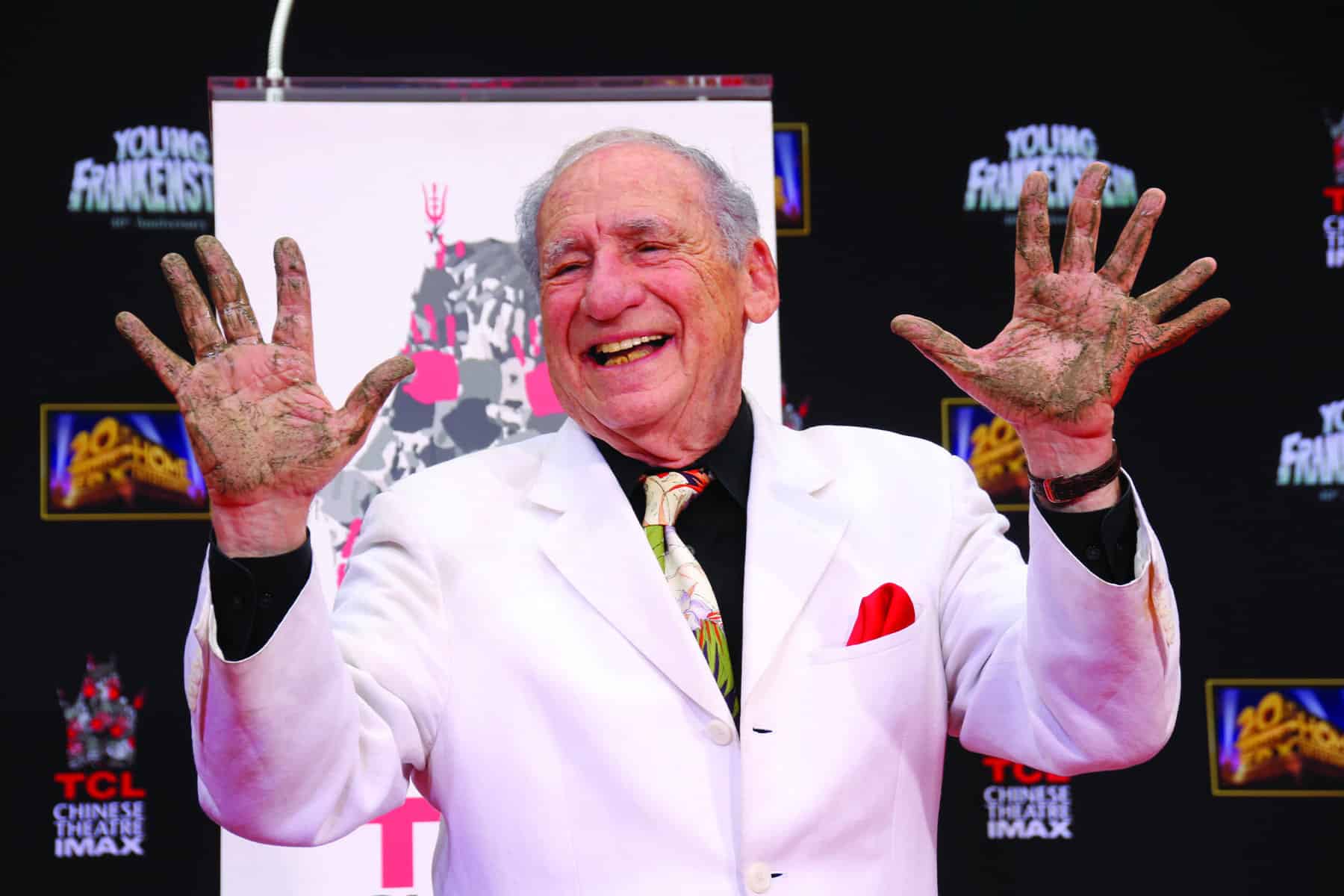Stephen Silver
(JTA) — The phrase “that movie could never be made today” has probably been said more about Blazing Saddles than any other movie in history.
Mel Brooks’ spoof of Hollywood Westerns is full of the N-word and racial and ethnic jokes, and gay stereotypes are played for laughs. There are rape jokes aplenty and more than one reference to a Black man’s endowment. A character punches a horse in the face, and one scene likely broke Hollywood records for sustained flatulence.
Those things, the argument goes, would never be accepted by the sensitive audiences of today, much less greenlit by skittish Hollywood decision-makers.
This may be true. But it’s also true that most of the things that are controversial about Blazing Saddles now were just as controversial back when it was first released, 50 years ago this week.
Blazing Saddles arrived in theaters on Feb. 7, 1974, as a sharp parody of the Hollywood Western, borrowing and upending the cliches of a classic genre as well as some of the actors who had worked in it. Hollywood’s Hays Code — prudishly dictating what could and couldn’t be done on film — was phased out only six years earlier.
Thomas Doherty, American studies professor at Brandeis University, places the film in the context of the New Hollywood era of the 1970s, including the way the taboo-breaking directors of that period deconstructed established genres like horror (The Exorcist), film noir (Chinatown) and the gangster flick (The Godfather).
“It was the first time ever that American cinema (virtually) was free from censorship — so filmmakers were showing things on screen that audiences had never seen before,” Doherty says. “There were few guardrails for race, sex, vulgarity. You could even blaspheme against the sacred genre of the Western — which we had all grown up with and whose generic conventions we knew by heart — with farting around the campfire, saloon gals who really were hookers, and Black sheriffs.”
But there’s another aspect of Blazing Saddles that’s timely today: It was made as an anti-racist statement. As Brooks writes in All About Me!, his 2021 autobiography, “In Blazing Saddles, there’s a very serious backstory. Racial prejudice is the engine that really drives the film and helps to make it work.”
Directed by Brooks and written by a quartet that included both Brooks and comedy legend Richard Pryor, who was Black, Blazing Saddles takes place in the 19th-century frontier town of Rock Ridge. The town stands in the way of a railroad that will enrich the politician Hedley Lamarr (Jewish actor Harvey Korman, desperate not to have his name confused with that of the bombshell Jewish actress Hedy Lamarr, who wouldn’t be born for another 40 years). Scheming to drive its residents away, he gets the dim and drunken governor (Brooks) to appoint a Black railroad worker named Bart (Cleavon Little) as the new sheriff, banking that the racist townspeople will clear out.
The all-white residents — all with the last name “Johnson” — react predictably. But soon, the sheriff teams up with a drunk, down-and-out gunslinger known as the Waco Kid (Gene Wilder, sport- ing an untamed Jewfro under his Stetson) to foil the plan. Eventually, they marshal a multiethnic alliance to defeat a racist army that includes Klansmen and a few anachronistic Nazis. And even the townspeople, up to a point, come around on Bart.
Blazing Saddles is a story about politicians and ruthless capitalists seeking to leverage racism in order to make money. It was made in the same year that the Equal Credit Opportunity Act made it illegal for creditors to discriminate based on race, religion, and national origin. Every time a modern politician gets elected by leveraging a culture war, with the goal of helping big business, they’re in a sense reenacting the plot of Blazing Saddles.
While Blazing Saddles is often described as a movie that “offended everyone,” it mainly denounced people who under the guise of defending “family values” are closed-minded and bigoted. Or, in the famous words of Wilder in the film, “the common clay of the new West — you know, morons.”
Similar to what the late Norman Lear — like Brooks, a Jewish veteran of World War II — was doing on television around the same time with groundbreaking shows like All in the Family, Blazing Saddles threaded the needle between uproarious comedy and social satire. And it’s that balance, much more than the all-around “offensiveness,” that’s made it the standard to which other satires aspire.
Blazing Saddles is one of the great triumphs of one of the top Jewish directors (Brooks) and one of the most beloved Jewish movie stars (Wilder) of the 20th century. And in the fine Brooks tradition, there’s Jewishness sprinkled throughout the proceedings, even if it’s parodying a genre that’s traditionally been mostly devoid of Jews. Before Hedley Lamarr lands on the scheme of hiring a Black sheriff, his henchman Taggert (Slim Pickens) suggests something biblical: “We’ll kill the firstborn male child in every household.”
“Too Jewish,” the politician replies.
Later, Brooks shows up as a Yiddish-speaking Indian chief (a gag, writes Brooks biographer Jeremy Dauber, that suggests a “kind of racial solidarity”). And speaking of Yiddish, the lisping German seductress played by the Jewish actress and Brooks perennial Madeline Kahn was named “Lili Von Shtupp” — her last name Yiddish slang for her favorite activity.
“I think what Brooks might have been doing with both the Black and the Jewish stuff was inserting characters who had traditionally been erased from the Hollywood Western,” Doherty says.

